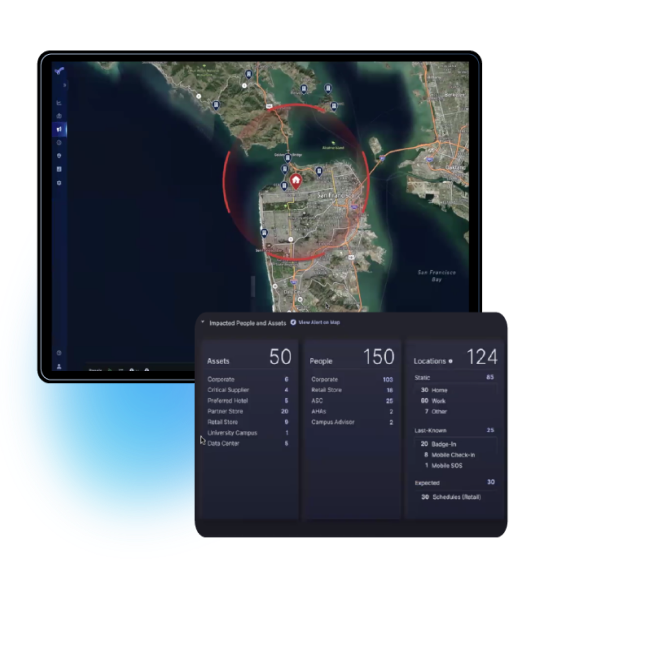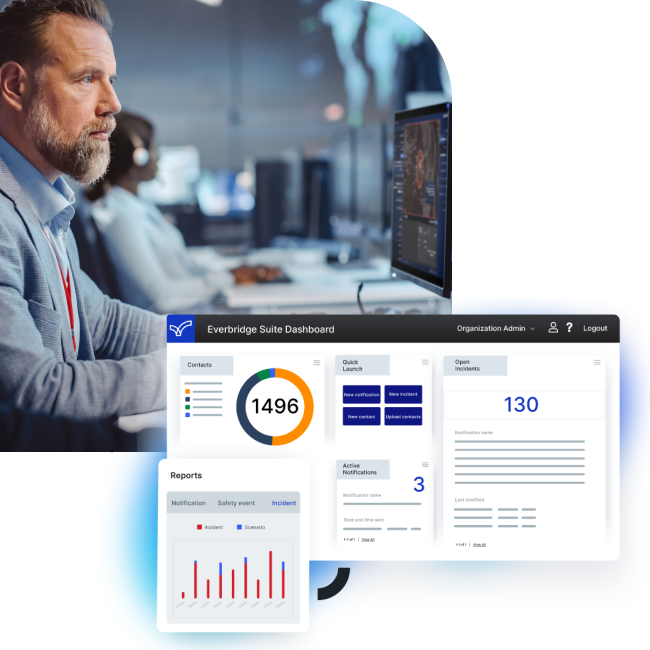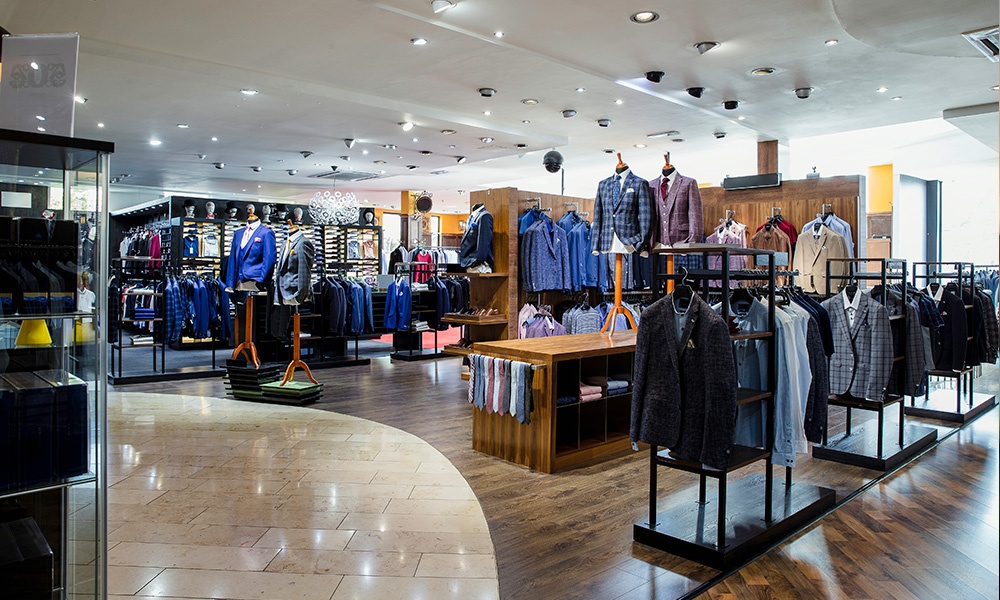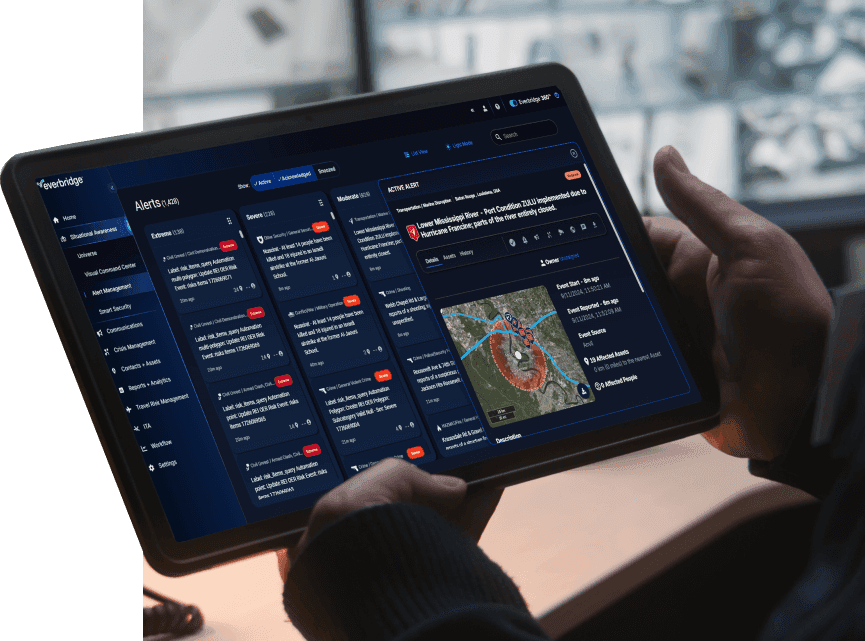Workplace safety
Safeguard your employees, whether in the workplace or working remotely, with advanced communication and security tools. Implement automated safety processes and streamlined response systems to ensure quick action. These user-friendly tools can enhance regulatory compliance, reduce costs, and increase productivity.

Ensure safety and security in your workplace
Workplace hazards can endanger employee safety and disrupt business operations. To effectively mitigate these risks, you need robust safety protocols and real-time communication channels. The Everbridge High Velocity Critical Event Management™ (CEM) platform, Everbridge 360, helps organizations implement comprehensive safety strategies, minimizing incidents and ensuring a safe, secure, productive workplace.

Limited proactive measures
- Identifying potential threats before they escalate can be difficult without the right tools and data.

Inefficient communication channels
- During emergencies, quick and effective communication is crucial,
ensuring that all employees are reached promptly.

Disjointed response teams
- Coordinating between various response teams can be complex, especially in larger organizations.

Monitoring employee safety in real-time
- Awareness of every employee’s safety in real-time, can be challenging.
Prepare to respond to workplace safety incidents with Everbridge solutions
Benefits
- Enhanced employee safety: create a safer work environment, reducing the risk of harmful incidents.
- Rapid communication: quickly alerts employees and provide safety instructions in real-time.
- Compliance and liability management: OSHA and state regulations (i.e. CA SB 553) with tools for early detection and communication.
- Analysis focused decision making: by accessing reporting, maintaining audit logs and identifying continuous areas for improvement.

Features
- Critical communications: inform everyone via SMS, email, and desktop alerts before, during, and after events.
- Location awareness: geolocate employees to quickly identify and communicate with those in danger.
- Incident management: coordinate responses with a centralized platform for resource management and action orchestration.

Solution
Everbridge 360 significantly improves employee safety and well-being with its advanced features, including risk assessment capabilities, safety training, personal protective equipment (PPE) management, and emergency procedures. It also offers tools for incident management and reporting, enabling you to conduct safety audits and maintain regulatory compliance. By fostering a strong workplace safety culture and supporting thorough accident investigations our platform, powered by Purpose-built AI, ensures a safer work environment.
How it works
The Everbridge platform identifies potential risks, empowering managers to assess and pinpoint team members or assets in jeopardy. It integrates advanced AI and real-time analytics to effectively monitor and evaluate threats. With automated emergency alerts, streamlined incident management, and comprehensive reporting, it also facilitates regular safety audits and highlights areas for process improvement.


Outcome
Harnessing Everbridge 360 enables rapid and coordinated responses to critical events. Ongoing safety training and risk assessments keep your workforce prepared and protected. By investing in Everbridge, you can enhance your preparedness for workplace incidents. Two-way communication allows you to send alerts and receive employee responses within seconds, maintaining a well-prepared and protected workforce. In one case, the use of opt-in alerts increased communication reach from 6% to 75%.
Improving employee protection and life safety | Pratt & Whitney
Pratt & Whitney chose Everbridge to connect with employees, customers, and stakeholders during critical incidents or events.

“Through our information sharing and analysis center, Red Hat Global security leverages Everbridge to gain a common operating view of our global risk landscape in order to support employee safety and business resiliency.”
Alan Borntrager, Head of Global Security, Safety and Resilience at Red Hat
Industry solutions for workplace safety
Manufacturing
Everbridge enhances workplace safety in the manufacturing sector by providing real-time alerts, streamlined communication, and efficient incident management, ensuring quick responses and minimizing risks to workers and operations.

Hospitals and healthcare
In healthcare settings, Everbridge can support workplace safety by providing real-time emergency alerts, streamlined communication, and incident management tools, ensuring swift responses to crises and protecting staff and patients effectively.

Construction
Everbridge helps construction companies ensure worker safety and operational continuity by providing real-time communication and critical event management solutions, enhancing emergency response and minimizing project delays.

Featured customer stories

Luxury retailer uses Everbridge to protect employees and locations
This Italian luxury fashion house required a sophisticated solution to protect all their employees and physical store locations across the US and Canada.

Manufacturing company can notify employees in seconds with Everbridge
A manufacturing company in mid-Atlantic relies on Everbridge to keep over 17,000 employees safe while using Mass Notification. Mass Notification enables them to communicate with employees at risk during a critical weather event, ongoing health crisis, or security threat.

Red Hat Global security leverages Everbridge
Through their Information Sharing and Analysis Center, Red Hat Global security leverages Everbridge and other solutions to gain a common operating view of their global risk landscape in order to support employee safety and business resiliency.

Workplace safety FAQs
Workplace safety is maintained through regular risk assessments, comprehensive safety training, regular safety talks, clear communication, and adherence to industry standards. Discover more workplace safety tips here.
Essential components include risk assessments, safety policies, employee training, emergency preparedness, and regular safety audits.
Ensure strong passwords are used, issue regular software updates, employee training on phishing, multi-factor authentication, and network monitoring.
Data backup protocols, incident response teams, communication plans, system recovery steps, and regular tabletop practices.
Best practices include secure VPN usage, regular cybersecurity training, ergonomic workspace setup, and mental health support. It is also beneficial to have location data to ensure organizations can check on the safety of employees during extreme weather scenarios.
